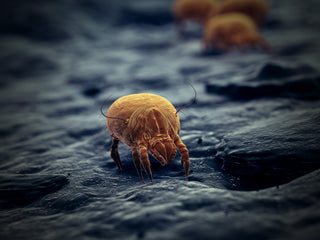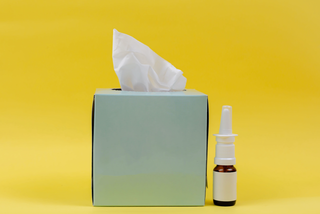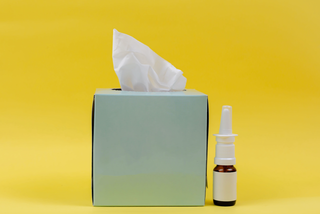My mother-in-law once had a total of nine television sets sprinkled throughout her house. I'm like her in a way…I have boxes of tissues littering my home, too. There's a box in each bathroom, kitchen, and bedroom, and don't forget the living room. Why, you may ask? I've got allergies.
So, Just What is an Allergy?
Allergies are an unnatural reaction by a person's immune system against a commonly non-irritating substance; when someone who is allergic encounters this matter or allergen, their body manufactures chemicals that cause allergy symptoms.
Symptoms
Symptoms can include watery or itchy eyes, stuffy or runny nose, coughing, sneezing, wheezing (it sounds like some of the Seven Dwarfs!), and hives. This malady is called allergic rhinitis. You could have all these symptoms or just a couple. I recently had an allergy attack that was, shall I say, intense. I was coughing, having a runny nose, and wheezing. I was quite dumbfounded about where my allergy came from until I figured it out. It was mold.
Couple Rough Seasons
Spring and fall are the most prevalent allergy season in the US. Tree and plant pollens are abundant and flying around at this time. Why do you always hear about grasses and tree pollens and not flower pollen? They are lighter-weight pollens and are easily carried by the wind, of course. Flower pollen is heavier and does not take flight with the air (ragweed is the exception). That's why we don't typically hear about allergies connected with flowers. Bees and birds are the carriers of this type of pollen.
What's Being Carried Around?
Mold spores, dust mites, grass, tree, and weed pollens are the main offenders. Besides airborne allergies, some folks are allergic to certain foods like peanuts and wheat (both on the rise), insects like bees, animals such as cats or birds, and even latex (think rubber gloves).
What Type of Allergies Do You Have?
Hay fever or rose fever is the most prevalent. Four million workdays are lost each year because of ragweed, the main "ingredient' causing the sniffles to those allergic. An interesting note: four weeks have also been added to the standard six-week period of ragweed season.
Certain Cities to Avoid
Lexington, KY, is an allergy sufferer's worst nightmare, especially in the spring. The Asthma and Allergy Foundation of America (AAFA) says its daily average pollen count is 300 grains per cubic meter of pollen.
Greensboro, NC, is another city on the AAFA list as the most miserable city in autumn. Grass, tree, and weed pollen are the offenders here.
It's not just in the South, frankly. Grand Rapids, MI, and Madison, WI, are places to avoid, especially in the fall, if you have seasonal allergies.
If You are Susceptible
Scan for sales at your grocery or pharmacy. If it's allergy season, chances are they will have allergy meds and other items on sale. It's also surely one way to stock your home with an abundance of tissues!
And if You Suffer from Allergic Asthma?
Allergic asthma is a type of asthma that is triggered by an allergic reaction. Allergic reactions can be triggered by a variety of things, including dust, pollen, and pet dander. When someone with allergic asthma comes into contact with one of these triggers, their airways start to swell and produce extra mucus. This can make breathing difficult and lead to a number of other symptoms, such as coughing, wheezing, and chest tightness. It's the same thing as a regular allergy, but if you have allergic asthma (respiratory distress), it's time to break out the serious helpers like inhalers. Asthma is very serious and is not something to sneeze at.
If you suffer from indoor allergies like pet dander and dust mites, try Allergen Spray. It works. It's highly rated. And people love it. Find relief today. Allergen Spray


















